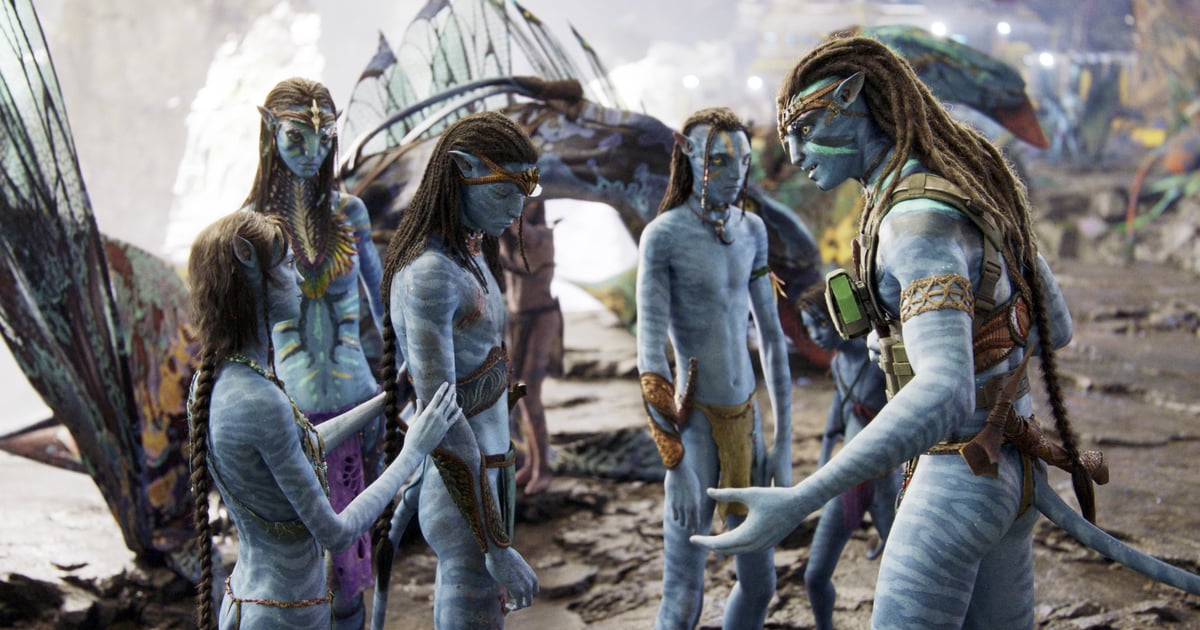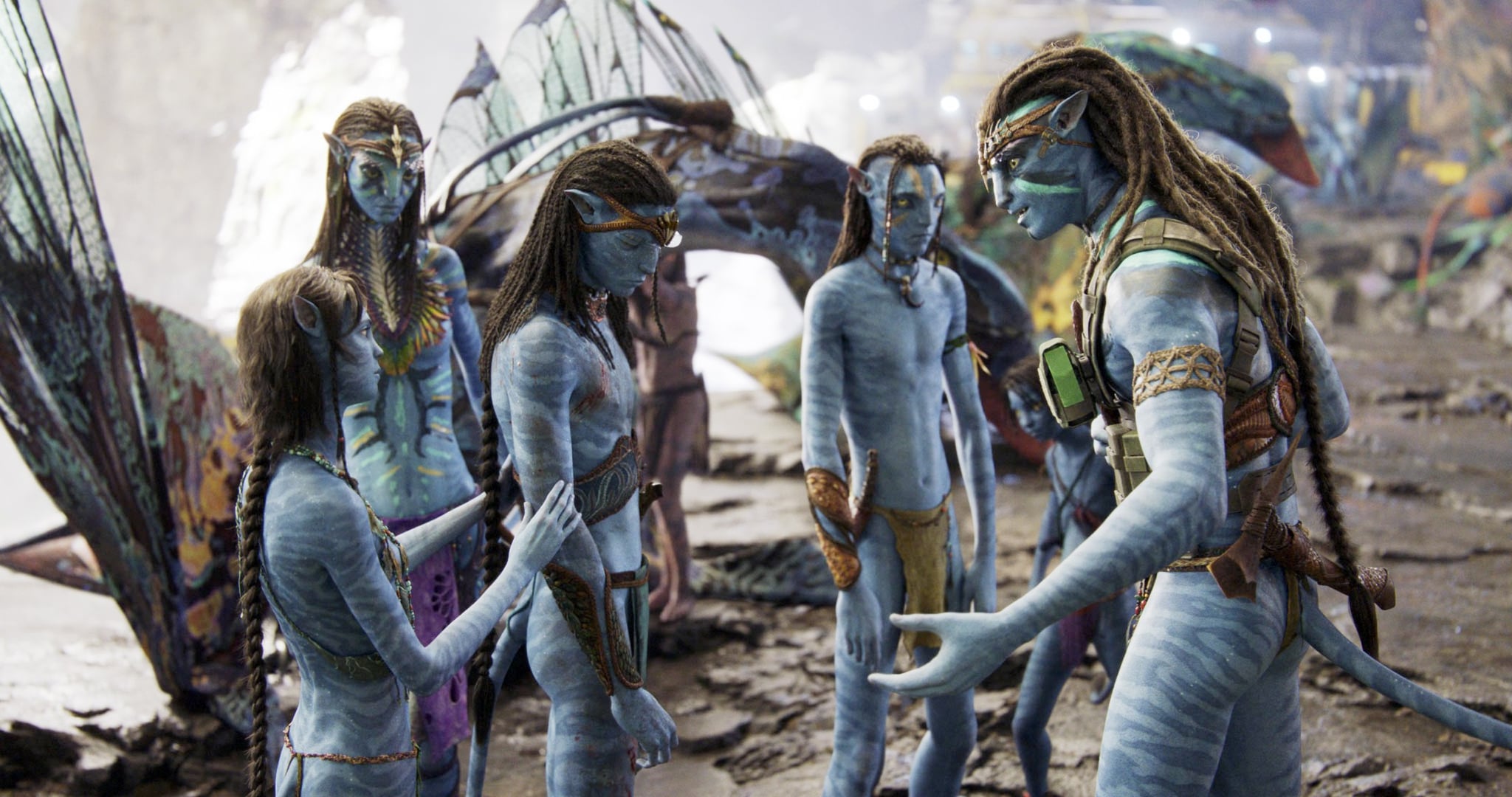

It’s been more than a decade since the first Avatar movie premiered and became the highest-grossing film of all time. Back in 2009, at the time of its release, I had just gotten my first Facebook account and flip phone. Since then, the world has gone through many sea changes — from three different US presidents to an unprecedented global pandemic.
Still, the Avatar world’s return doesn’t feel like a throwback. Even if there’s another decade between this one and each of James Cameron’s three planned additional installments, I’m sure that I’ll still feel that their themes are just as resonant.
Of course, 30 years from now, we could be in dire environmental straits. The world is projected to have warmed by more than 2.7 degrees Fahrenheit since pre-industrial levels by then if we continue burning fossil fuels at the same rate that we currently are, according to the Intergovernmental Panel on Climate Change. That amount of warming would mean exponentially more flooding, wildfires, droughts, widespread displacement, and mass extinction — and the only way to curb the rate at which Earth warms is to make “rapid, unprecedented changes” now, per Reuters.
Planetary annihilation looms over the Avatar franchise, which is built on the not-so-implausible concept that Earth has destroyed its resources and now has decided to violently colonize a lush extrasolar moon. Of course, its inhabitants, the Na’vi, aren’t cool with that, and with the help of paraplegic ex-Marine Jake Sully and the natural world itself, they manage to fend off the human army. The first movie used blockbuster action to conceal a powerful lesson about the importance of working with nature to defeat a dangerously extractive culture, and so does “Avatar: The Way of Water,” which also disguises its messages in a never-ending churn of action, charm, and most of all, beauty.
But the human threat hasn’t gone away in “The Way of Water.” The re-emergence of the late Colonel Miles Quadrich, whose memories have been embedded permanently into an Avatar body, forces Jake Sully, Neytiri, and his five children to become refugees themselves as they’re forced to flee their forest home to find sanctuary in a water-dwelling society.
The movie is even more visually magnificent than the first, but in terms of story, it isn’t entirely a satisfying follow-up. It lacks the depth and cohesion of the original and feels more like a buildup of a sequel than anything else. If this were the final Avatar movie, it would feel deeply unsatisfying and hollow; I left the theater feeling very relieved that more sequels are on the way. Despite its length (a whopping three hours and 12 minutes), narratively, “The Way of Water” feels a bit like a filler episode within an excellent TV series.
Still, it’s hard to deny that “Avatar: The Way of Water” is visual art of the highest caliber. The Na’vi’s skin is studded with dazzling bioluminescence. Underwater scenes are so fluid and immersive that you almost feel like you’re touching tendrils of seaweed as you ride alongside tulkun — wise, compassionate four-eyed whale-like creatures that are perhaps the movie’s best characters.
The new young Na’vi characters are also well-developed, and you get the feeling that Sully’s kids — from sweet little Tuk to her stoic older brother, Neteyam, to angsty middle child Lo’ak — could each have their own movie. Sigourney Weaver’s Kiri, who is the daughter of Weaver’s late Dr. Grace Augustine, seems particularly set up to be central to the franchise’s narrative.
Sensitive and perceptive, teenage Kiri seems to have a spiritual connection with Eywa, the deity that runs through all life on Pandora. She’s able to communicate with the earth and nearly dies when she links her tail to a spiritual underwater tree, connecting to some unexplained frequency that seems to nearly fry her brain with its power. The question of her unknown father places her in the position to be a kind of Jesus figure, possibly immaculately conceived by the natural world and Weaver’s brain-dead Avatar. But how exactly her story will play out remains a mystery.
That question, and the question of the entire planet’s survival, takes a backseat to visuals, action sequences, and Quaritch’s personal grudge against Sully. “Avatar 2” falters in its dialogue and sometimes in its storyline, with Sully repeating cliché catch phrases like “Sullys stick together” and “a father’s duty is to protect his family” in an awkward, distracting voiceover. Notes of tension between Sully, Neytiri, and Lo’ak are presented but left unresolved. A final battle feels unnecessarily labyrinthine and stumbles to an unsatisfying end. An emotional conclusion drives home the story’s central water metaphor — “the way of water has no beginning and no end” is repeated more than once by different characters — but it’s diluted by another voiceover.
Despite all of that, “Avatar: The Way of Water” is still well worth seeing. Its visual beauty is dazzling enough to fill you with a kind of childlike wonder that’s hard to conjure in our screen-saturated world. It also may invoke an intense desire to throw open your doors and run out to commune with nature — and that’s by design.
In a December interview with National Geographic, Cameron explained that he hopes that “if people see this film, and aside from the drama of the Sully family [the film’s protagonists] and the relationships and all these big, dramatic conflicts, if they just love the underwater experience — and they love that sense of the profusion of life and the magic and mystery — then maybe it will reconnect them with what we are presently losing here on this planet.”
Regardless of its faults, the Avatar franchise is the biggest and best mainstream climate change story that we currently have. That’s in part because it utilizes the most profitable and crowd-pleasing conventions of American blockbusters, blazing guns and fiery explosions and all. Climate narratives so often fail because they’re preachy, alienating and boring audiences with data and guilt trips. The Avatar movies instead lure audiences in with all the bombastic trappings of Marvel flicks and then show us, in magnificent color, what we are fighting to save — the natural world we cannot survive without.
The third Avatar movie is projected to come out in 2024, which means that at this rate, the franchise could be complete within a decade. This same decade is almost incomprehensibly critical in the fight against climate change.
In 2018, the United Nations famously reported that we had 12 years “to limit climate change catastrophe,” per The Guardian, which means we have about eight left now. In light of that time crunch, we need more people than ever to remember why we need to fight for our own planet, which really means fighting for ourselves. That point is the heart of the Avatar story, which — albeit imperfectly — refracts that long-held Indigenous wisdom into something both alien and entirely too close to home.
“Avatar: The Way of Water” is now in theaters.

0 Comments :
Post a Comment